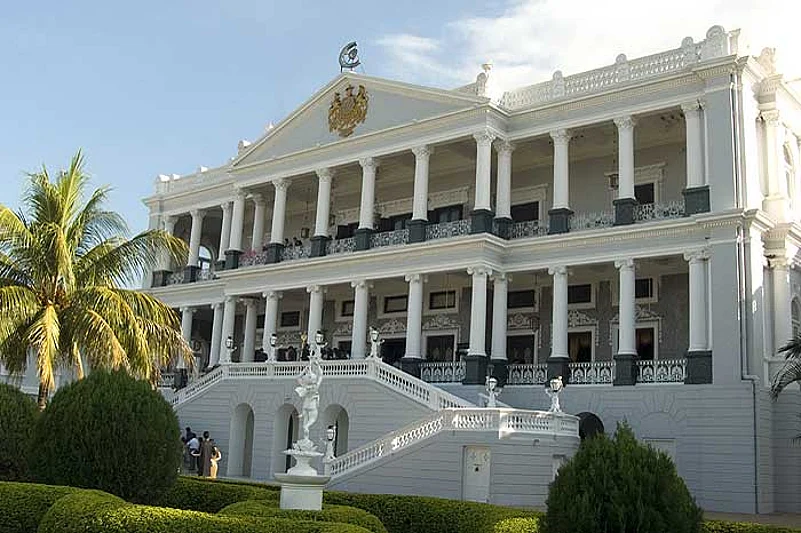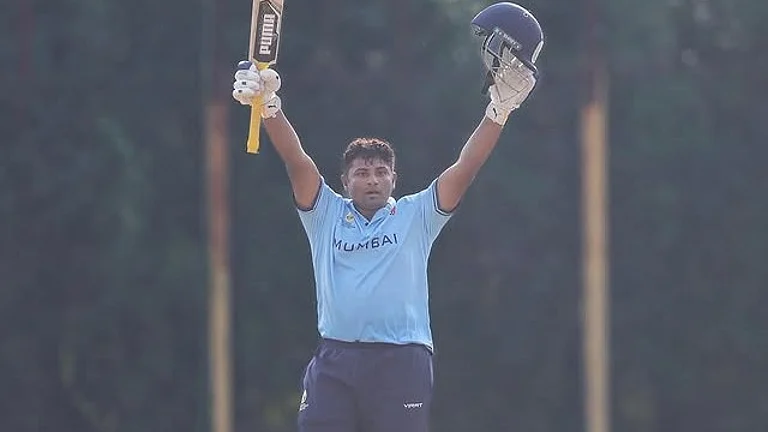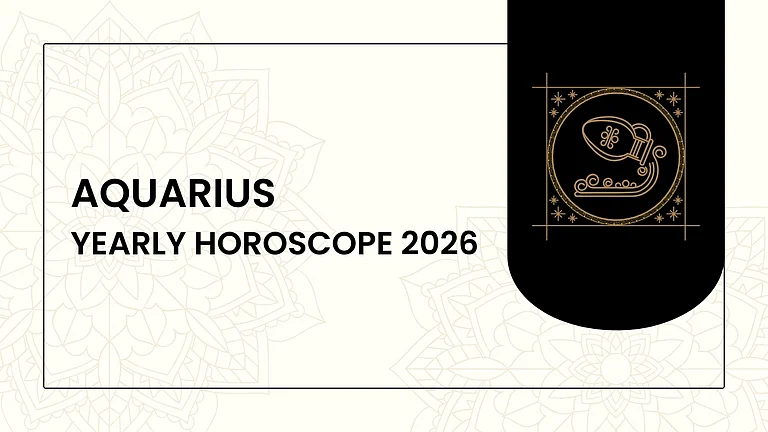Rebuilding a Legend
- The Falaknuma Palace will open on November 13 as a Taj heritage hotel
- It stands on 32 acres and is among the most expensive hotels in the country
- The Nizam’s Suite is priced at Rs 5 lakh a night
- The palace, completed in 1893, was inspired by the Buckingham and Windsor places
***
It’s a royal fairytale come alive. Once a rambling piece of history, which the Nizam’s heir Prince Mukarram Jah Bahadur struggled to maintain, Hyderabad’s grandest palace, the Falaknuma, has been restored to its former glory. After close to a decade of extensive renovation, the ‘Mirror of the Sky’ (Falaknuma) is now fully open to visitors as a hotel. Of course, at a price. Wearing the corporate Taj tag, the Falaknuma Palace is touted to be one of the most expensive luxury heritage hotels in India. Its duplex Nizam’s Suite is priced at Rs 5 lakh a night. The hotel formally opens on November 13.
The palace was not intended to be the abode of the sixth Nizam, Mir Mahbub Ali Khan. It was actually built by the former prime minister of Hyderabad, Sir Vicar-Ul-Umra, a serial palace-builder. Work began in 1884 and it took nine years to build. But nothing Vicar built was as grand as the Falaknuma. He was said to be fascinated by the Buckingham and Windsor Palaces during an official visit to London and wanted to replicate them in his kingdom.

The bedroom of the sixth Nizam Mir Mahbub Ali Khan at the palace. (Photograph by P. Anil Kumar)
Estimates suggest that the construction cost at that time was Rs 35-60 lakh. Historians say his brother-in-law, the sixth Nizam, visited Vicar in 1897 and ended up with the keys of the palace. While some say it was a gift, documents at the Purani Haveli hint that Mahbub Ali Khan paid his brother-in-law the sum in instalments. He finally died at the palace on August 29, 1911.
His successor, the seventh Nizam, Mir Osman Ali Khan, converted the Falaknuma into a guest palace which then passed on to his grandson Prince Mukarram Jah. Crowned Nizam in 1967, Mukarram, however, lost the Nizam tag in 1971 following the abolition of titles and privy purses. While he now divides his time between Turkey, Australia and London, it is his former first wife, Princess Esra, who spearheaded the renovation work.
Located on a hillock, the Falaknuma reflects the opulence of the richest rulers of the world. Spread over 32 acres, the palace is shaped like a scorpion (evidently, Vicar was a Scorpio) and immediately transports one to an era of royalty and romance. Right from its Durbar Hall, Zenana Wing, Chinese Whisper Room, Jade Room, Palace Library with a collection of 5,900 rare books and hookah and billiards rooms to the beautiful Gol Bungalow which offers a breathtaking view of the city.
With 60 rooms and royal suites and base rate of Rs 33,000 a room (excluding taxes), the Taj Falaknuma Palace is once again the domain of the obscenely rich. Its restaurants Celeste and Adaa (with emphasis on Hyderabadi cuisine) are open to all but essentially Falaknuma is all about being a history snob.

Once Upon A Banquet The 33-metre-long, 101-seater dining table. (Photograph by P. Anil Kumar)
One of Falaknuma’s biggest attractions is, of course, the magnificent 101-seater dining hall which is 33-metres long, with a woodwork ceiling and ornate chandeliers. Its perfect acoustics make it possible for one to hear the person at the far end of the table.
The hotel’s general manager Ranjit Phillipose refuses to reveal the restoration cost or how long the lease is valid, but industry sources believe it is for 99 years. At one point, about 800 people were working on the restoration. Its ornate art and artifacts, paintings, frescos and other collections clearly prove that the Nizams loved the good life. Be it a bathtub or a hookah, the essence of palatial life is evident. While the approach route to Falaknuma through the galis of the Old City may not appeal to a foreign visitor, the Taj is confident they will form a chunk of the clientele.
As to whether musical evenings or marriages would be allowed on its premises, Phillipose’s answer is simple, “Anyone who wants to use the premises is welcome. Only, they have to bear the cost of all the 60 rooms which would amount to about Rs 1 crore a day.” Boasting of visitors like King Edward III, Prince of Wales II, Russian Tsar Nicholas II and many other royals from across Europe, the palace showcases these visitors through portraits on its staircase.
Eminent historian Narendra Luther, who has authored books like Hyderabad: A Biography, Raja Deen Dayal and The Nocturnal Court, recollects a time when he was principal secretary, tourism, 30 years ago. “I felt the Falaknuma had tremendous potential and wrote to Prince Mukarram Jah urging him to throw it open to the public. But my plea wasn’t heard. In fact, Mukarram considered it an insolent letter. Jah’s private secretary even lost his job because he delivered my letter.” The former bureaucrat says several tourists who visited Hyderabad at that time would tell him they were willing to pay $100 for a meal at the 101-seater dining hall. But Mukarram was a bit careless in the upkeep of the palace. “Every time I visited, an old relic or painting would be missing. This is because he left things to others,” says Luther.
Heritage retrieval experts like Martand Singh and Aman Nath have worked on the Falaknuma. Some of its rich handcrafted tapestries have been dyed 300 times over to get the exact shade as seen in paintings, its jade collection has been restored to shining order as have its brocades from France. Its high-facility gym might bring a guest back into the modern age but a quick walk up to the Gol Bungalow where bats fly freely can take one back to the bygone era.


























